Less than 10 months remain until the 2025 Coupe du Monde de la Pâtisserie. Currently, the Continental Selections are in progress to ascertain which countries will secure a place to compete against the world’s finest pastry chefs next January in Lyon, France.
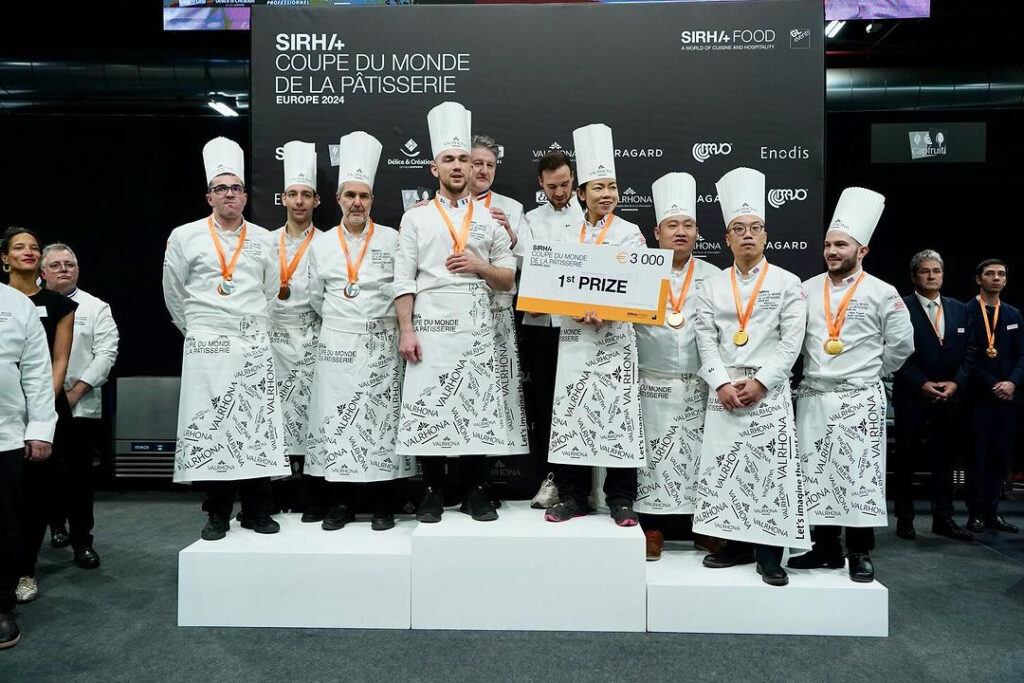
Coupe du Monde de la Pâtisserie/Instagram
The European Selection took place in France this past January, with France, Italy, and the United Kingdom each securing a spot for the 2025 competition.
The upcoming Americas Continental Selection, scheduled for 11 June 2024, will be held in New Orleans, Louisiana. This competition will determine which countries from the Americas will earn a spot in the competition. Schedule to compete are Argentina, Canada, Chile, Mexico, Paraguay, and the United States of America.
The Continental Selections differ slightly from the International competition in that each team is represented by both a Chocolate Candidate and a Sugar Candidate. The Ice Candidate only participates in the competition held in France. In 2022, a new category featuring frozen lollipops was introduced for the Continental Selection. This addition was also incorporated into the Coupe du Monde de la Pâtisserie held in January.
For the Continental Selection, each team must present a Frozen Dessert with Capfruit Fruit Purees, a Restaurant-style Dessert featuring Valrhona Chocolate, a Pastry Creation, as well as one artistic creation made from sugar and one from chocolate. In addition, each team must incorporate all these pieces as part of a buffet.
In this year’s Continental Selections, the frozen lollipop category has been substituted with “Pastry Creation – Revisiting a Classic,” where participants create a dessert that is considered a classic in the host country.
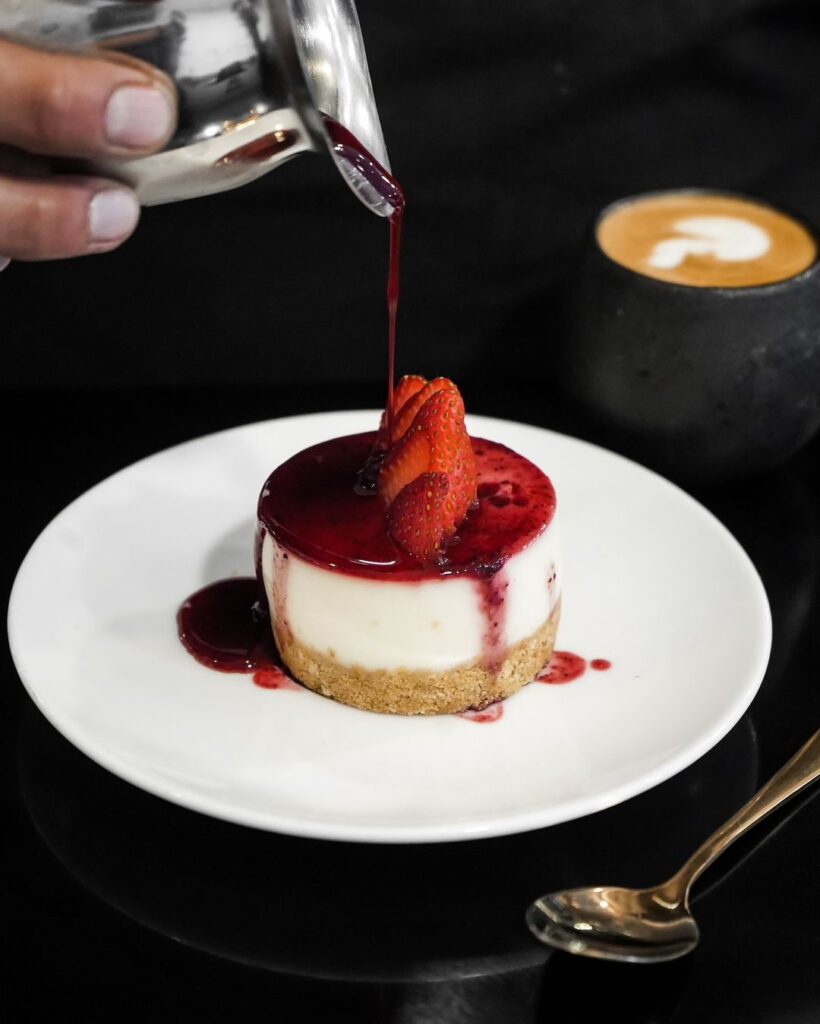
Since this year’s European Continental Selection was France, the Pastry Creation was a reinterpretation of the classic Paris Breast. For the Americas Selection, each country will need to reinvent the popular cheesecake.
According to the Coupe du Monde de la Pâtisserie, “Candidates will have to create three pastry creations to serve six persons.” The dessert will be judged on “the participants’ originality and creativity.”
The organization goes on to say that these “cheesecakes must be identical in shape, composition, and finish. They also must include a reconstituted shortbread and have at least two different textures in addition to the shortbread.”
What is a Cheesecake?
A cheesecake is a type of dessert – a baked custard – characterized by a rich and creamy filling, usually made with cream cheese, eggs, sugar, and flavorings, such as vanilla or lemon juice, set on a crust, often made from crushed cookies or graham crackers, and typically baked. Cheesecakes can vary in texture from light and fluffy to dense and creamy, depending on the ingredients and baking methods used. They can also feature a variety of toppings, including fruit compotes, chocolate ganache, or whipped cream.
Junior’s Cheesecake and the Cheesecake Factory are two of the most famous cheesecake makers in the United States. Junior’s Cheesecake in Brooklyn, New York says on their website that there are four fundamental types of cheesecake, with the type and even the brand of cheese influencing both texture and flavor: Curd-based cheesecake, encompassing varieties like farmer’s cheese, pot cheese, or cottage cheese; ricotta cheesecake, synonymous with the Italian tradition; quark cheesecake, representative of German cuisine; and cream cheese cheesecake, famously associated with New York-style cheesecake. Furthermore, an unbaked, chiffon-like rendition of cheesecake exists, known as French cheesecake.
The History of the Cheesecake
When some people think of the humble cheesecake they think of the United States and in particular New York, however the history of cheesecake dates back thousands of years (some say up to 4,000 years ago), with its origins going back to ancient Greece.
The earliest known mention of “cheesecake” (plakous meaning “flat mass”) dates back to ancient Greece. It is believed to have originated on the Greek island of Samos. Physical anthropologists unearthed cheese molds there dating back to around 2,000 B.C. While cheese and cheese-related products likely existed for millennia before this discovery, records from periods earlier than this delve into prehistory, before the advent of written language, leaving much to speculation. In ancient Greece, cheesecake held a revered status as a source of energy, evidenced by its provision to athletes during the inaugural Olympic Games in 776 B.C. Additionally, Greek newlyweds often celebrated their nuptials with cheesecake, which was fashioned from basic ingredients such as flour, wheat, honey, and cheese, pounded smooth into patties, then cooked on an earthenware griddle.
In 230 A.D., Greek philosopher and historian, Athenaeus, is credited for documenting the process of making cheesecake in his writings. (By this time, the Greeks had been serving cheesecake for over 2,000 years but this is the oldest known surviving Greek recipe.) These ancient Greek cheesecakes were likely made with simple ingredients such as cheese, wheat flour, and honey, baked on a crust.
Upon the Roman conquest of Greece, the cheesecake recipe became one of the spoils of war, according to Cheesecake.com. Romans adapted it by incorporating crushed cheese and eggs, baking the mixture beneath a hot brick, and serving it warm. At times, they encased the cheese filling in pastry. Dubbed “libuma” by the Romans, this “cheese cake” became a delicacy reserved for special occasions. Marcus Cato, a Roman politician of the first century B.C., is renowned for documenting the oldest known Roman cheesecake recipe.
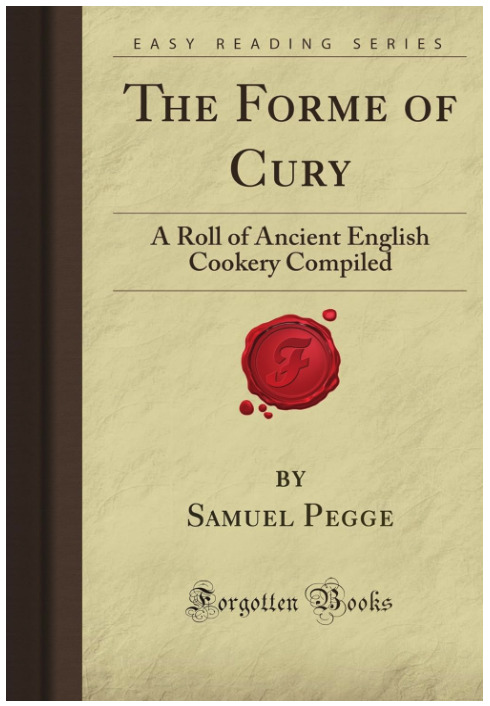
The first English cookbook, “The Forme of Cury” (c. 1390), consisted of a collection of medieval English recipes compiled by the cooks of King Richard II, included two cheese tarts: “Sambocade,” containing curd cheese, egg whites, rosewater, and elderflowers, and “Tart de Bry” (the word bry was derived from Old Norman for “pounded,” referring to the method of preparing the cheese) made with ruayn (a semi-soft autumn cows’ cheese), egg yolks, and ground ginger.
In the 1600s, Elinor Fettiplace, an English cookery book writer kept a “receipts” book for dishes, meals, medical remedies, and tips for running the household. “With the first of the spring milk, cheese makes an appearance, as does cheesecake,” writes Clarissa Dickson Wright in “A History of English Food.”
“Elinor’s recipe for the latter resembles to some extent the Yorkshire curd tarts we get today, though the flavoring is rather different,” she continues. “Essentially it comprises a pastry case filled with egg yolks, drained curds, butter, currants and then those characteristically medieval ingredients rose water and a little grated nutmeg. By the time it got to the table, it would have been richly adorned, probably with candies flower petals: a characteristically Elizabethan touch.”
Even Henry VIII’s chef had his take on a cheesecake recipe.
Cheesecake made its way to America with the immigrants. The early American colonists brought their cheesecake recipes with them, and cheesecake became a popular dessert in the New World. However, the availability of ingredients and regional preferences influenced the variations of cheesecake recipes across different parts of the country.
“By the 1730s, Philadelphia boasted the “Cheesecake House” tavern,” states Junior’s Cheesecake website. “Martha Washington’s ‘Booke of Cookery and Booke of Sweetmeats’ (c. 1625, given to her upon her wedding to her first husband, Daniel Custis, in 1749) offered three cheesecakes and a baked “Curd Pudding,” the latter being a cheesecake without a crust -— all flavored with rosewater, spices, and currants and baked in pastry crusts. Eliza Leslie in ‘Seventy-Five Receipts for Pastry, Cakes, and Sweetmeats’ (Boston, 1828) provided ‘A Cheesecake’ also accented with rosewater, spices, and currants. In the 19th century, subtler lemon and/or vanilla replaced rosewater and spices as the predominant cheesecake flavoring. The basis of many American cheesecakes dramatically changed in the 1930s from curd cheese -— producing a light, fluffier, slightly coarse texture and somewhat bland flavor -— to a much creamier and richer treat — due to cream cheese.”
“Cream cheese is a soft unaged cheese with a mild flavor and slight tang,” says Junior’s website. “Any citation of ‘cream cheese’ before 1875 (such as Martha Washington’s Booke of Cookery) referred to ‘slip-coat cheese,’ rich milk and heavy cream mixed with a little rennet, coagulated, drained, then left to ripen in muslin or cabbage leaves for several days until the exterior dried to form a loose rind encasing a creamy interior.”
The Birth of the Philadelphia Cream Cheese Brand
In the 19th and 20th Centuries, as technology advanced, the production of cheesecake became more streamlined. Cream cheese, a key ingredient in modern cheesecake, was invented in the late 19th century by New York dairy farmer William Lawrence. In 1872, Lawrence, from Chester, New York, accidentally created a creamier version of Neufchâtel cheese, by added a bit too much cream and created a richer, more spreadable cheese which eventually led to the creation of Philadelphia cream cheese. Ironically, this famous cream cheese was never invented in Philadelphia, Pennsylvania.
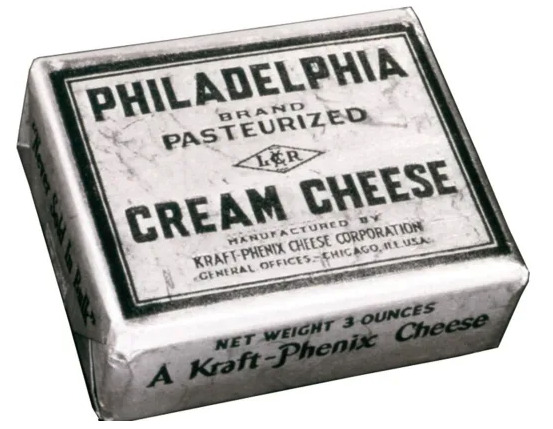
It was not marketed as “Philadelphia Cream Cheese” until 1880. That year, Lawrence partnered with A.L. Reynolds, a cheese distributor in New York to sell larger quantities of cream cheese. At the time, Philadelphia and its surrounding area had a reputation for high-quality dairy farms and creamier cheese products, so they decided to use the name “Philadelphia” on the foil-wrapped blocks of their cream cheese.
However, the majority of Americans maintained their preference for cheesecakes made with curd cheese until the early 1930s when cream cheese-based varieties surged in popularity, particularly in New York City. The inclusion of stabilizers by producers in the late 1920s was crucial in promoting the use of cream cheese in cakes; without them, the cheese tended to break up during baking, leading to a grainy texture.
The company went through some changes over the years and the trademarked Philadelphia name was sold to the Phenix Cheese Company in South Edmeston, New York. In 1928, Phenix merged with Kraft to form the Kraft-Phenix Cheese Company.
New York-Style Cheesecake
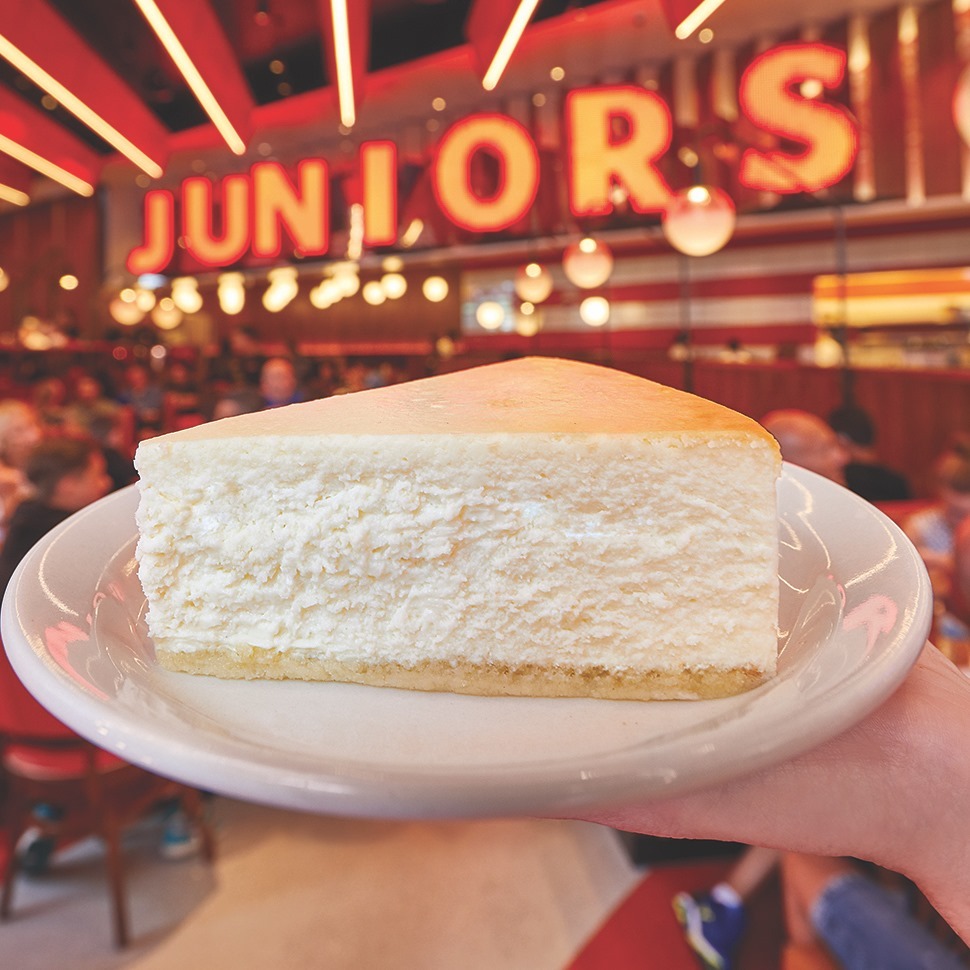
No story about the cheesecake is complete without exploring the origins of the New York-style variation. The Classic New York-style cheesecake is presented solely as the cake itself—devoid of any fruit, chocolate, or caramel adornments either atop or on the sides. Renowned for its impeccably smooth taste, this cake derives its distinctive flavor from the inclusion of additional egg yolks in the cream cheese mixture.

By the 1900s, denizens of New York City had developed a fervent adoration for this dessert. Practically every eatery boasted its own rendition of cheesecake on its menu. New Yorkers have competed for recognition as the purveyors of the original recipe ever since. Although renowned for his iconic sandwiches, Arnold Reuben (1883-1970), a German-Jewish immigrant who came to America at a young age, is widely attributed with inventing the New York Style cheesecake. Legend has it that Reuben, who also claims to have created the reuben sandwich in 1914, attended a dinner gathering where the hostess served a cheese pie. Supposedly captivated by the dish, he reportedly tinkered with the recipe until perfecting the beloved New York Style cheesecake.
When Reuben’s innovative cheesecake was served to high-profile clientele at his restaurants in the 1930s, it garnered extensive renown and imitation by rival delis.
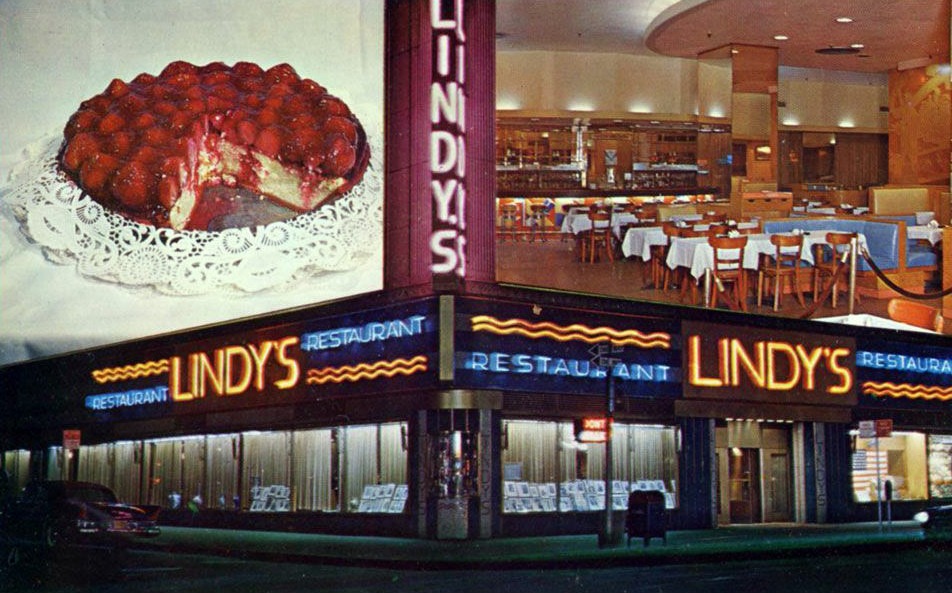
Leo “Lindy” Lindemann, along with his wife Clara, opened a deli called Lindy’s Restaurant in Manhattan’s Theater District in August 1921. Lindy’s became famous for its creamy cheesecake topped with strawberries in a gel. While there were rumors that Lindy acquired the secret recipe from Reuben’s baker, the two cakes were not identical. Clementine Paddleford, America’s first food journalist, claimed to offer Lindy’s recipe in a 1948 edition of the “Los Angeles Times,” which featured cream cheese and heavy cream baked in a “cookie dough” crust. Lindy’s cheesecake was popularized further when author Damon Runyon frequented Lindy’s and featured it in his stories as “Mindys.” In 1950, Lindy’s cheesecake was immortalized in the musical “Guys and Dolls,” where Nathan Detroit attempted to entice Sky Masterson to wager on whether Mindy’s sold more cheesecake or apple strudel.
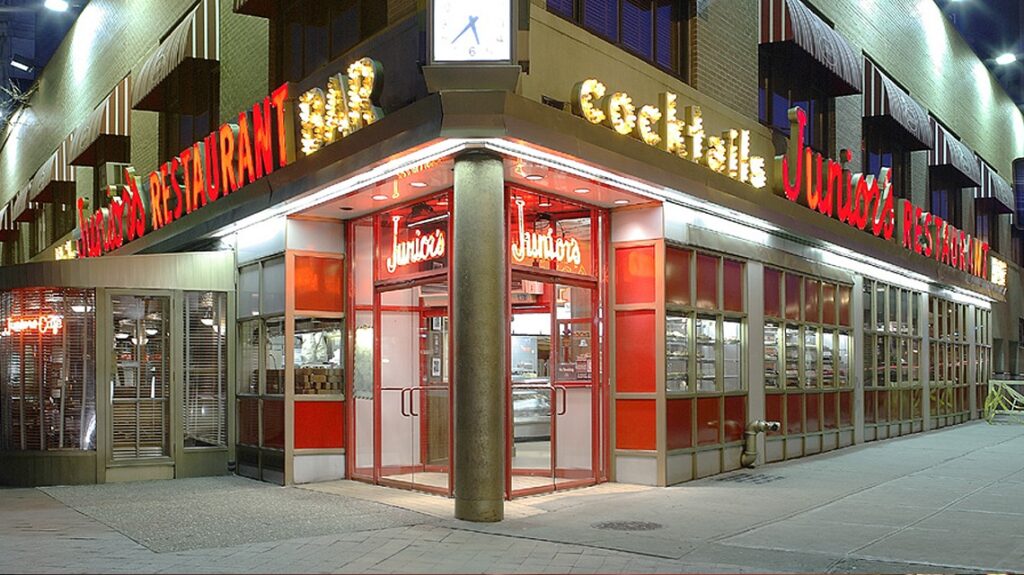
Junior’s Cheesecake is a renowned dessert institution located in Brooklyn, New York, known for its iconic cheesecakes and other baked goods. The history of Junior’s Cheesecake dates back to the 1950s when Harry Rosen, an immigrant from Eastern Europe, opened the first Junior’s Restaurant in 1950 in Brooklyn’s Flatbush neighborhood.
The restaurant, named after Rosen’s two sons, Walter and Marvin (nicknamed “Junior”), quickly gained popularity for its delicious cheesecakes, which became its signature dish. Junior’s Cheesecake stood out for its creamy texture, rich flavor, and dense consistency, which set it apart from other cheesecakes of the time.
Over the years, Junior’s Cheesecake grew in popularity, becoming a beloved destination for locals and visitors alike. Its reputation for high-quality cheesecakes and other comfort foods helped it endure as a New York City institution.
Philadelphia-style Cheesecake
The other popular type of cheesecake here in the United States is the Philadelphia-style or Philly-style cheesecake. This type of cheesecake is not to be confused with Philadelphia cream cheese, although it typically is used in the recipe. This type of cheesecake is lighter in texture and has a deeper, slightly tangy flavor than a New York-style cheesecake. Another major difference is there is no sour cream, heavy cream, or any other mix-ins. Typically, a Philly Cheesecake, which most experts and chefs say there are three versions, has a graham cracker base and is made with cream cheese, vanilla, eggs, sugar, and lemon juice. Nothing else.
“The typical Philadelphia cheesecake, that’s really hard to pinpoint, because I really think it’s because of the cream cheese more than anything,” says “Cheesecake Bible” author George Geary
“But New York style, for all its glory and added fats, can somehow still manage to taste dry,” writes Cassie Owens for BillyPenn.com. “Multiple chefs told us that Philly style gets pointed to as an alternative to New York attributes that not everyone loves.”
Thank You for Being A Friend
No dessert has become as closely associated with a television series as cheesecake, particularly with one show, “The Golden Girls.” The show debuted on 14 September 1985 on NBC and the first time a cheesecake made an appearance was in the 22nd episode of the first season. Whenever the four women were upset, needed to solve a problem, were celebrating, or for that matter any reason at all, they would sit down at the kitchen table and pull out a cheesecake. In fact, cheesecake was eaten or was about to be eaten in over 100 episodes during its seven year run.
Other Types of Cheesecake
Currently, cheesecake is savored in numerous variations and flavors globally. Alongside the renowned New York-style and Philadelphia-style cheesecakes, various adaptations from different cultural backgrounds have garnered significant recognition.
- Chicago Style Cheesecake: This version is known for its tall and dense texture, often incorporating sour cream or heavy cream into the filling. It may also have a thicker crust than other types of cheesecake.
- Italian Style Cheesecake: Italian cheesecake often uses ricotta cheese as the main ingredient, resulting in a lighter and fluffier texture compared to other cheesecakes. It may also contain citrus zest or liqueur for flavoring.
- French Style Cheesecake: (Fiadone) Also known as a no-bake cheesecake, the French style cheesecake is made without eggs and is set using gelatin or another thickening agent. It tends to have a lighter and smoother texture.
- Japanese Style Cheesecake: Japanese cheesecake, also known as cotton cheesecake, is characterized by its fluffy and light texture. It uses a combination of cream cheese, eggs, and whipped egg whites to achieve its airy consistency.
- Chocolate Cheesecake: Chocolate cheesecake incorporates chocolate into the filling, either through cocoa powder, melted chocolate, or chocolate chips. It can have a rich and indulgent flavor, often topped with chocolate ganache or whipped cream.
- Fruit-flavored Cheesecake: These cheesecakes feature various fruits mixed into the filling or layered on top. Common fruit flavors include strawberry, blueberry, raspberry, and mango, among others.
- Marble Cheesecake: Marble cheesecake combines regular cheesecake batter with a chocolate or fruit-flavored batter, creating a swirled or marbled appearance.
- Basque Cheesecake: This cheesecake from Spain (and popular in France) is the alter ego to the classic New York–style cheesecake with a press-in cookie crust. It is a crustless custard-like cheesecake with a caramelized top that is burnt, cracked, and cooked at high heat.
- German Cheesecake – Also known as Käsekuchen it involves separating the eggs and folding whipped egg whites into the batter, which results in a lighter, fluffier texture compared to American cheesecake recipes. Quark is also the base cheese. It is similar to whole milk ricotta.
- Swedish Cheesecake (Ostkaka) – According to Spatuladesserts.com, to make an authentic Swedish cheesecake (first made in the 16th century) you’ll have to go and buy some rennet and make milk curds from scratch. But thankfully, modern Swedish cheesecake recipes use cottage cheese instead. Furthermore, there is no crumb base, and usually some kind of flour for added structure. So a Swedish cheesecake is very different from classic cheesecake recipes. As they are less sweet, you’ll usually find them topped with fresh fruit or preserves depending on the season.
- Russian Cheesecake (Vatrushka) – Russian cheesecake offers a distinct taste and texture compared to the familiar classic cheesecake varieties. It’s a baked cheesecake crafted from farmer’s cheese (pressed curds), cream of wheat, eggs, yogurt, and raisins, and notably lacks a base. Typically enjoyed for breakfast or as an afternoon treat. Raisins or other dried fruits like apricots or candied orange peel enhance its sweetness, as it traditionally contains minimal sugar.
- Polish Cheesecake (Sernik) – This is the most versatile of the group because there are no fixed parameters here — it can be crustless, have a bottom crust, or a bottom and top crust; anything goes. The crust, when there is one, is typically crumbly or made with shortcrust pastry. The cheese of choice is twaróg, a Polish cow’s milk cheese similar to ricotta, curd cheese, or farmer’s cheese. It is typically mixed with eggs, sugar, butter, some thickener, and traditionally, raisins, although they may be skipped completely.
- Austria Cheesecake (Topfentorte) – Topfentorte is an Austrian-style cheesecake made with topfen or quark cheese (see German Cheesecake) as the main ingredient. Apart from topfen, the cake is made with eggs, sugar, flour, lemon juice and zest, whipping cream, and gelatin. The tangy topfen filling is typically sandwiched between two layers of sponge cake.
- Norway Cheesecake (Brunost ostekake) – Brunost ostekake is a traditional Norwegian cheesecake made with Brunost brown cheese. Other common ingredients for the cake include digestive cookies or graham crackers, butter, cream, eggs, cream cheese, sugar, and vanilla. The cookies or crackers are crushed and mixed with melted butter, and the mixture is then tipped and leveled on the bottom of a springform tin.
Everything Else About Cheesecake
The invention of the springform pan in the 20th century revolutionized cheesecake-making by allowing for easier removal of the delicate cake from the pan without damaging it. Additionally, the incorporation of various toppings and flavors, such as fruit compotes, chocolate, and caramel, further diversified the cheesecake’s appeal.
Overall, the history of cheesecake reflects its evolution from a simple ancient dessert to a beloved indulgence enjoyed by people of diverse cultures and backgrounds worldwide.
References:
Juniors Cheesecake website
Cheesecake.com
Spatuladessert.com
Bon Appetit
Wikipedia
Taste Atlas